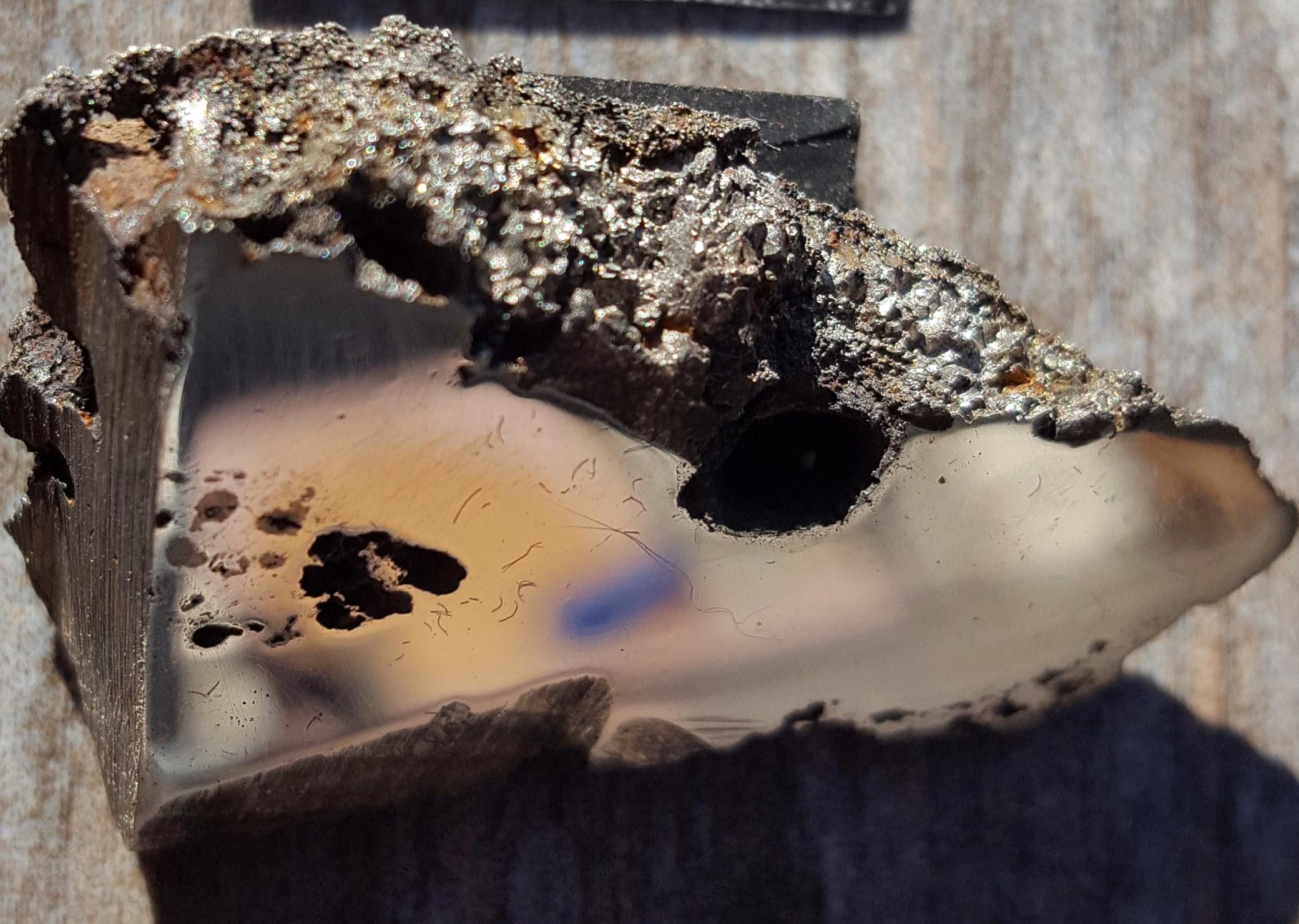
Une tranche de la météorite El Ali, maintenant dans la collection de météorites de l’Université de l’Alberta, contient deux minéraux jamais vus auparavant sur Terre. Crédit : Université de l’Alberta
De nouveaux minéraux découverts dans une météorite massive pourraient révéler des indices sur la formation d’astéroïdes.
Une équipe de chercheurs a découvert au moins deux nouveaux minéraux jamais vus auparavant sur Terre dans une météorite de 33 000 lb (15 000 kg) découverte en Somalie en 2020. Cette météorite géante est la neuvième plus grande jamais découverte.
« Lorsque vous trouvez un nouveau minéral, cela signifie que les conditions géologiques réelles, la chimie des roches, étaient différentes de ce qui a été trouvé auparavant », explique Chris Hurd, professeur au Département des sciences de la Terre et de l’atmosphère et conservateur de l’Alberta collection de météorites. « C’est ce qui rend cela excitant : dans cette météorite particulière, vous avez deux minéraux officiellement décrits qui sont nouveaux pour la science. »
Une tranche de 70 grammes de la météorite a été envoyée à l’Université de l’Alberta pour classification, où les deux minéraux ont été découverts. Il semble qu’il y ait déjà un troisième minéral possible à l’étude. Hurd note que si les chercheurs obtiennent plus d’échantillons de la météorite massive, il y a une chance qu’ils trouvent plus de minéraux.
Les deux minéraux nouvellement découverts ont été nommés elaliite et elkinstantonite. Le premier nom, élaliite, vient de la météorite elle-même, qui s’appelle officiellement « La plus hauteUne météorite parce qu’elle a été trouvée près de la ville d’Al-Ali dans la région de Hiran en Somalie. Flock a nommé l’elkenstantonite le deuxième minéral après Lindy Elkins-Tanton, vice-président de l’Initiative planétaire de l’ASU, professeur au Collège d’exploration de la Terre et de l’espace de l’ASU et chercheur principal de l’étude.[{ » attribute= » »>NASA’s upcoming Psyche mission.

A slice of the El Ali meteorite contains two minerals never before seen on Earth. Credit: University of Alberta
“Lindy has done a lot of work on how the cores of planets form, how these iron-nickel cores form, and the closest analogue we have are iron meteorites. So it made sense to name a mineral after her and recognize her contributions to science,” Herd explains.
In collaboration with researchers at the University of California, Los Angeles (UCLA) and the California Institute of Technology (Caltech), Herd classified the El Ali meteorite as an “Iron, IAB complex” meteorite, one of over 350 in that particular category.
As Herd was analyzing the meteorite to classify it, he saw something that caught his attention. He brought in the expertise of Andrew Locock, head of the University of Alberta’s Electron Microprobe Laboratory, who has been involved in other new mineral descriptions including Heamanite-(Ce).
“The very first day he did some analyses, he said, ‘You’ve got at least two new minerals in there,’” says Herd. “That was phenomenal. Most of the time it takes a lot more work than that to say there’s a new mineral.”
Locock’s rapid identification was possible because the two minerals had been synthetically created before, so he was able to match the composition of the newly discovered natural minerals with their human-made counterparts.
Scientists are still examining the minerals in detail to determine what they can tell us about the conditions in the meteorite when it formed.
“That’s my expertise — how you tease out the geologic processes and the geologic history of the asteroid this rock was once part of,” says Herd. “I never thought I’d be involved in describing brand new minerals just by virtue of working on a meteorite.”
Herd also notes that any new mineral discoveries could possibly yield exciting new uses down the line.
“Whenever there’s a new material that’s known, material scientists are interested too because of the potential uses in a wide range of things in society.”
While the future of the meteorite remains uncertain, Herd says the researchers have received news that it appears to have been moved to China in search of a potential buyer. It remains to be seen whether additional samples will be available for scientific purposes.
Herd described the findings at the Space Exploration Symposium on November 21 at the University of Alberta’s ETLC Solarium.







More Stories
Quelle est la prochaine grande nouveauté en matière de perte de poids ?
Une nouvelle découverte pourrait réécrire les livres sur la génétique
Compenser le sommeil le week-end pourrait réduire d’un cinquième le risque de maladie cardiaque – étude | Maladie cardiaque